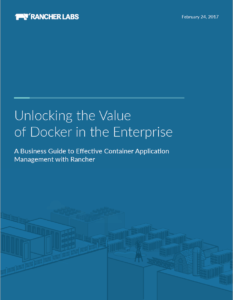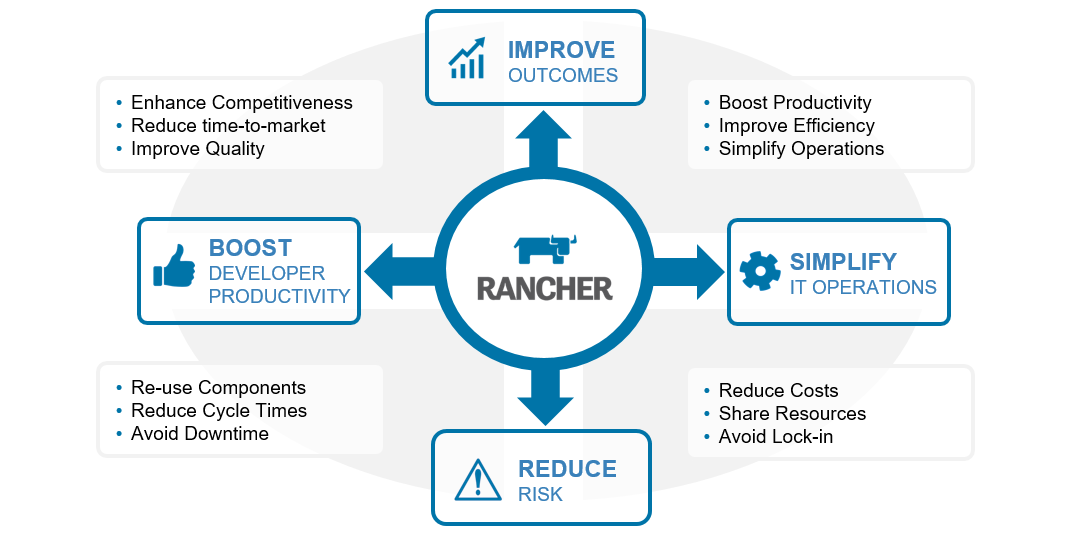Unlocking the Business Value of Docker
Why Smart Container Management is Key
For anyone working in IT, the excitement around containers has been hard
to miss. According to RightScale, enterprise deployments of Docker over
doubled in 2016 with 29% of organizations using the software versus just
14% in 2015 [1]. Even more impressive, fully 67%
of organizations surveyed are either using Docker or plan to adopt it.
While many of these efforts are early stage, separate research shows
that over two thirds of organizations who try Docker report that it
meets or exceeds expectations [2], and the
average Docker deployment quintuples in size in just nine months.
Clearly, Docker is here to stay. While exciting, containers are hardly
new. They’ve existed in various forms for years. Some examples include
BSD jails, Solaris Zones, and more modern incarnations like Linux
Containers (LXC). What makes Docker (based on LXC) interesting is that
it provides the tooling necessary for users to easily package
applications along with their dependencies in a format readily portable
between environments. In other words, Docker has made containers
practical and easy to use.
Re-thinking Application Architectures
It’s not a coincidence that Docker exploded in popularity just as
application architectures were themselves changing. Driven by the
global internet, cloud, and the explosion of mobile apps, application
services are increasingly designed for internet scale. Cloud-native
applications are comprised of multiple connected components that are
resilient, horizontally scalable, and wired together via secured virtual
networks. As these distributed, modular architectures have become the
norm, Docker has emerged as a preferred way to package and deploy
application components. As Docker has matured, the emphasis has shifted
from the management of the containers themselves to the orchestration
and management of complete, ready-to-run application services. For
developers and QA teams, the potential for productivity gains are
enormous. By being able to spin up fully-assembled dev, test and QA
environments, and rapidly promote applications to production, major
sources of errors, downtime and risk can be avoided. DevOps teams
become more productive, and organizations can get to market faster with
higher quality software. With opportunities to reduce cost and improve
productivity, Docker is no longer interesting just to technologists –
it’s caught the attention of the board room as well.
New Opportunities and Challenges for the Enterprise
Done right, deploying a containerized application environment can bring
many benefits:
- Improved developer and QA productivity
- Reduced time-to-market
- Enhanced competitiveness
- Simplified IT operations
- Improved application reliability
- Reduced infrastructure costs
While Docker provides real opportunities for enterprise deployments, the
devil is in the details. Docker is complex, comprised of a whole
ecosystem of rapidly evolving open-source projects. The core Docker
projects are not sufficient for most deployments, and organizations
implementing Docker from open-source wrestle with a variety of
challenges including management of virtual private networks, managing
databases and object stores, securing applications and registries, and
making the environment easy enough to use that it is accessible to
non-specialists. They also are challenged by skills shortages and
finding people knowledgeable about various aspects of Docker
administration.  A business guide to effective
A business guide to effective
container app management –
Compounding these challenges, orchestration technologies essential to
realizing the value of Docker are also evolving quickly. There are
multiple competing solutions, including Kubernetes, Docker Swarm and
Mesos. The same is true with private cloud management frameworks.
Because Docker environments tend to grow rapidly once deployed,
organizations are concerned about making a misstep, and finding
themselves locked into a particular technology. In the age of rapid
development and prototyping, what is a sandbox one day may be in
production the next. It is important that the platform used for
evaluation and prototyping has the capacity to scale into production.
Organizations need to retain flexibility to deploy on bare-metal, public
or private clouds, and use their choice of orchestration solutions and
value-added components. For many, the challenge is not whether to deploy
Docker, but how do so cost-effectively, quickly and in a way that
minimizes business and operational risk so the potential of the
technology can be fully realized.
Reaping the Rewards with Rancher
In a sense, the Rancher® container management platform is to Docker what
Docker is to containers: just as Docker makes it easy to package,
deploy and manage containers, Rancher software does the same for the
entire application environment and Docker ecosystem. Rancher software
simplifies the management of Docker environments helping organizations
get to value faster, reduce risk, and avoid proprietary lock-in.
 Written with a
Written with a
technology and business audience in mind, in a recently published
whitepaper, Unlocking the Value of Docker in the Enterprise,
Rancher Labs explores the challenges of container management and
discusses and quantifies some of the specific areas that Rancher
software can provide value to the business. To learn more about Rancher,
and understand why it has become the choice of leading organizations
deploying Docker, download the whitepaper and
learn what Rancher can do for your business.
[1]
http://assets.rightscale.com/uploads/pdfs/rightscale-2016-state-of-the-cloud-report-devops-trends.pdf
[2]
https://www.twistlock.com/2016/09/23/state-containers-industry-reports-shed-insight/
Related Articles
Jul 03rd, 2023
Meet Elemental: Cloud Native OS Management in Kubernetes
Nov 29th, 2022
Installing and Running Kubewarden In Air-Gapped Environments
May 18th, 2023